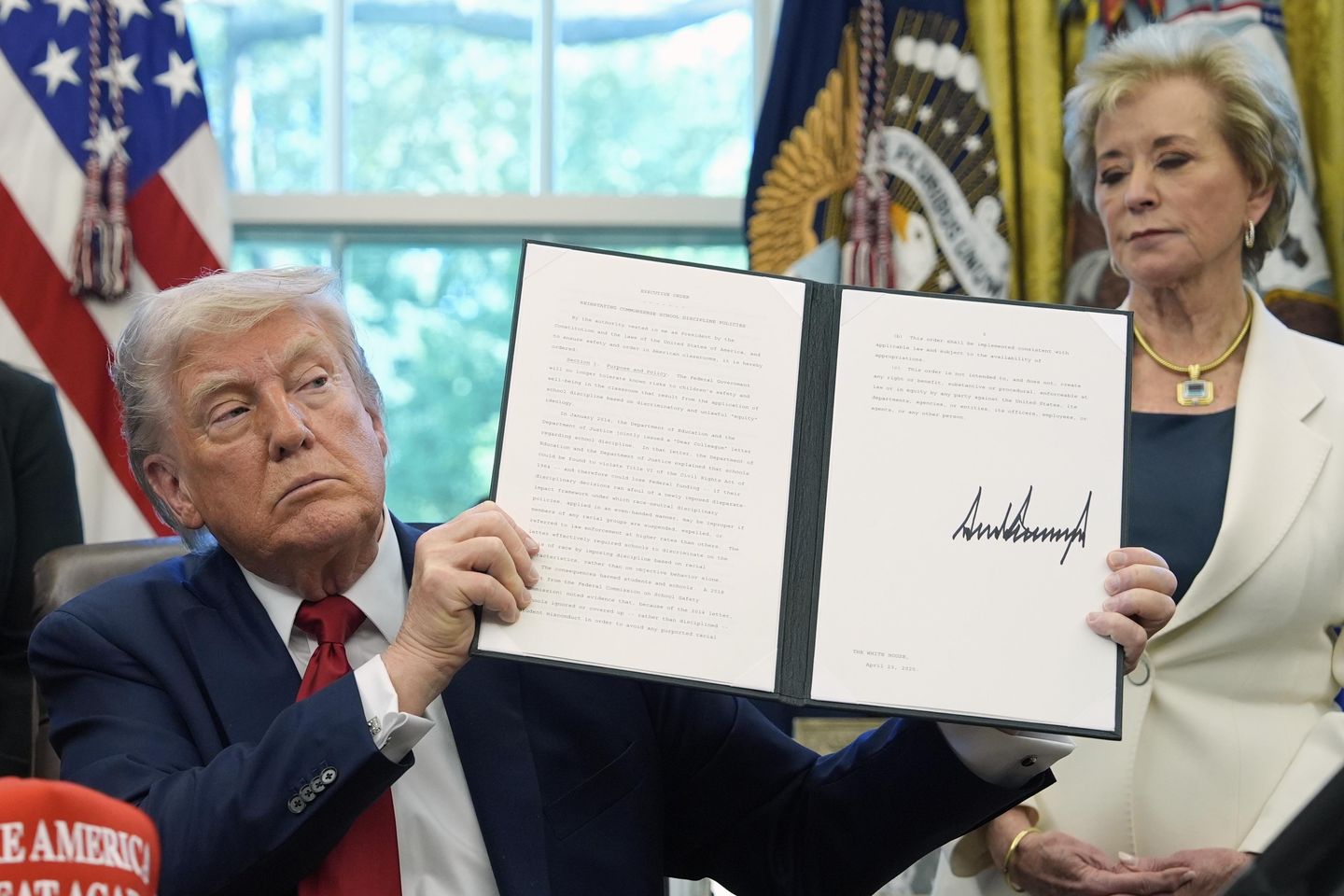
President Trump can’t shut down the Education Department without getting the approval of Congress, his top Supreme Court lawyer acknowledged in arguments to the justices on Friday.
“The government has repeatedly acknowledged — and acknowledges again now — that the department cannot be closed without an act of Congress,” Solicitor General D. John Sauer said in a new court filing.
But he said Mr. Trump does have wide-ranging powers to limit the department’s activities, including firing nearly 1,400 employees.
Mr. Sauer asked the high court to put on hold a lower court ruling that blocked the firings.
“The Constitution vests the Executive Branch, not district courts, with the authority to make judgments about how many employees are needed to carry out an agency’s statutory functions, and who they should be,” he said.
The employee firings were cast as a reduction in force, or RIF, which is a standard tactic for cutting staff at agencies.
But U.S. District Judge Myong J. Joun, a Biden appointee who sits in Massachusetts, said the Education Department RIF seemed more about shutting down the department itself.
He said the staffing changes had already left key department offices unable to perform their statutory duties, such as tracking student performance or accepting civil rights complaints.
He rejected as “plainly not true” the Trump administration’s claims that the cuts were merely a reorganization.
Mr. Sauer said the judge’s reasoning was wrong and that the jurist’s solution — to order a rehiring of the employees and regular updates to see how things are getting along at the department — goes well beyond the powers of a judge.
Mr. Sauer said the president does want Congress to shutter the department, but Mr. Trump’s executive order notwithstanding, the administration continues to keep it up and running. Indeed, Secretary Linda McMahon recently posted her request for nearly $67 billion in funding for the department for fiscal 2026.
“The executive branch cannot unilaterally close the department, but it retains significant authority to trim its workforce and its performance of discretionary functions,” Mr. Sauer said.
That’s included shutting down 104 grants, in addition to the RIF.
The district court previously issued an order blocking the grant terminations, but the Supreme Court stepped in and put that ruling on ice.
The justices said the harm to the federal government of paying out grant money that it may never recoup if it wins the eventual legal argument cautioned against ordering the payments.
Mr. Sauer said that same principle applied to Judge Joun’s new order demanding the fired employees he rehired.
Shutting down the department has long been a goal of conservatives.
Mr. Trump has gone the furthest of anyone to make it a reality. In his March executive order, he called for its closure “to the maximum extent appropriate and permitted by law.”
He said the department “has plainly failed our children, our teachers and our families.”
“Ultimately, the Department of Education’s main functions can, and should, be returned to the states,” the president declared.
The challenge to the firings was led by New York and joined by other Democrat-governed states.
The Supreme Court gave them a week to respond to Mr. Sauer’s petition.












